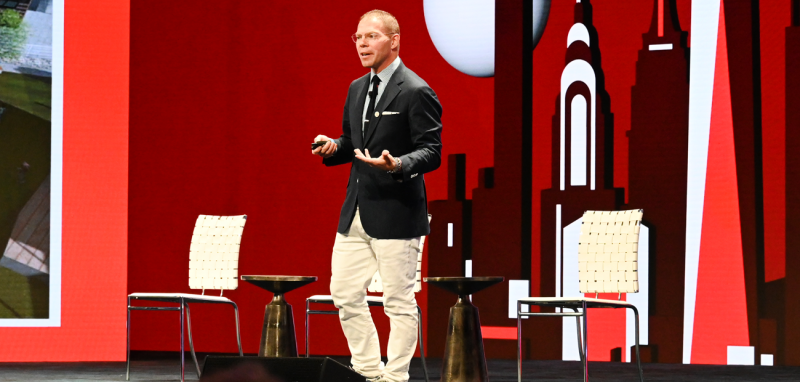How will commercial real estate needs change in the next five to 10 years? How has the COVID-19 pandemic accelerated the change? And what’s the implication for cities? Those questions were top of mind as the National Association of REALTORS®’ inaugural C5 Summit, a commercial real estate conference, kicked off Monday in New York.
Cities have a bright future, said Greg Lindsay, a senior fellow and director of applied research at the New Cities Foundation and Monday’s opening speaker, but the way residents live and work will undergo a radical transformation.
People take for granted that in the not-too-distant future, we’ll all be accepting deliveries from and riding around in autonomous vehicles. But what about autonomous buildings, which are essentially machines where goods, services, and amenities automatically come to you? That’s the future that Lindsay asked C5 attendees to think about. Research shows “Americans are ready for extreme automation,” Lindsay said.
To meet the demand, planners and developers are deconstructing spaces and rethinking them to combine housing, retail, industrial, office, and recreation. The vision for autonomous buildings includes these ideas:
- Food can be dispatched from nearby centralized kitchens.
- Retail and grocery delivery can deploy from micro-warehouses.
- Residents can eliminate their daily commute through companies’ adoption of cloud solutions, flexible workspaces, and coworking.
Retailers and developers are already putting such ideas into action, Lindsay said. He pointed to Hub 121 in fast-growing McKinney, Texas, as a development that turns traditional city planning on its head. Rather than restaurants and amenities springing up to serve area office workers, the developers started with multiple outdoor beer gardens and restaurants, surrounding them with flexible workspaces, Lindsay said.
Buildings that can integrate technology and adapt to consumers’ and companies’ changing needs will succeed. “He who controls the app and the delivery controls the experience,” Lindsay said.
Amazon Fresh, for example, opened its first grocery store in Woodland Hills, Calif., and quickly began using delivery data to change the store layout in real time. Lindsay said the company is bringing to life the concept of the “15-minute neighborhood”—a term coined by University of Paris Professor Carlos Moreno to indicate areas where residents can mostly bike, walk, work, and meet all their needs within a 15-minute radius. Moreno, who serves as a special envoy for smart cities to Paris Mayor Anne Hidalgo, envisioned the concept as a way of reducing cities’ carbon footprint while improving residents’ quality of life. He has said he draws inspiration from the work of Jane Jacobs, author of 1961 classic “The Death and Life of Great American Cities.” Jacobs famously fought urban planning efforts of the 1950s and ’60s that facilitated the growth of car-dependent, suburban living.
Bustling Times Square, where the C5 conference is being held through Wednesday, served as the perfect backdrop for Lindsay’s C5 Summit remarks.
While the pandemic proved that office workers aren’t place-dependent, “superstar cities have retained their vitality,” Lindsay told C5 attendees. “Urban cores are stronger than ever, even if the real estate types within them are changing.”
To thrive, he said, cities need to rethink the public realm, focusing on how to beautify it, activate it, and turn it into something that’s more useful. “We can no longer think of cities as places where we stack people.”
Follow REALTOR® Magazine’s coverage of the C5 Summit at magazine.realtor/live.












